Email marketing statistics you need to know in 2020
We’ve seen plenty of email statistics posts over the years. There are absolutely loads of them that are published each year, linking to plenty of sources – and they can be useful, but many tend to be a bit dry, just collecting a bunch of data findings in a list. That’s fine if you know what you’re looking for, but many Avasam users are new to eCommerce and selling, so we thought we’d take a different tack. In this post, we’re going to have a look at email marketing in general, how businesses can make use of email marketing and how those statistics work in real terms. We’ll even throw in a few tips about how to manage your inbox – because with the amount of emails we all receive in 2020, we can all benefit from working smarter, not harder!
Email basics
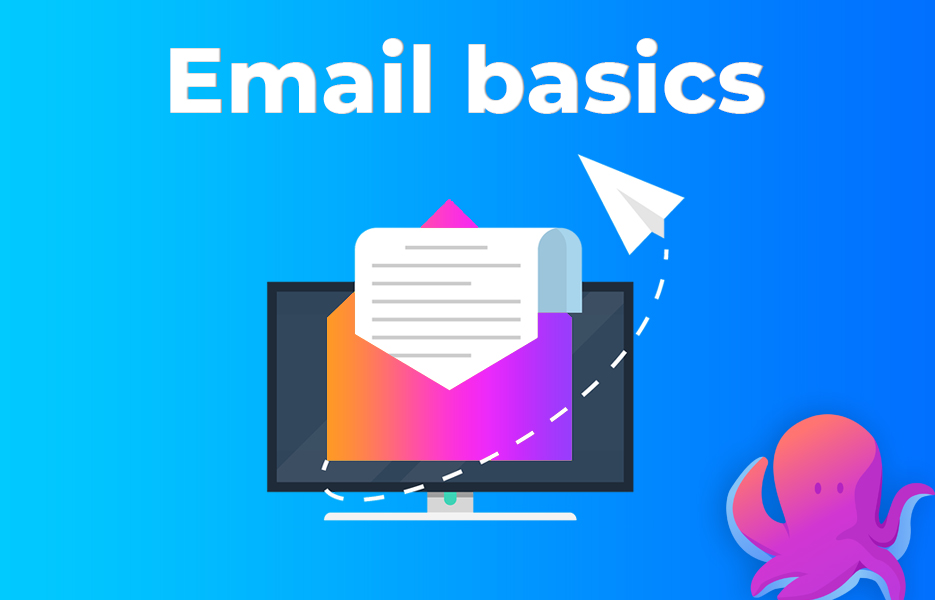
Although we’re used to email and have been for decades now, before we jump into the heavy email marketing stuff, we thought we’d have a quick look at the basics about email first.
How long has email been around?
The first email was sent right back in 1971. We can’t imagine a life without pinging at least a few emails to friends and colleagues every day, but Ray Tomlinson was the first person to send email. Who did he send it to, you might wonder – well, it was in fact to himself, and he received it on the computer that was next to him! We wonder if he knew how it would impact on all our lives today when he was working on it all those years ago?
How many people use email?
In 2019, email users around the world topped 3.9 billion, and by 2023, there will be an estimated 4.4 billion email users worldwide (Statista). To put in context just how massive that number is, there are approximately 7.7 billion people on the planet – and it means we’re well on the way to over half of the world’s population being an email user. Although there are age restrictions on how old children have to be to have an email account with webmail services such as Gmail and Outlook.com (usually these are around age 13), many parents have taken to setting up email accounts for children as soon as they are born, and schools are allocating email addresses for pupils on their systems from the age of 11, if not earlier.
How many emails are sent daily?
In 2019, there were an average of 293.6 billion emails sent each day. Since (as we just mentioned) it is expected that over half the world’s population will be using email in the next few years, that number is set to grow exponentially. That means the potential gains to be made from email marketing is likely to grow too. If you’re a business owner, you won’t want to miss out on the opportunities that email can offer as email becomes ever more popular worldwide.
How many of those emails are spam though?
Over half of emails sent are classified as spam – 54.68% of email sent in September 2019 was spam. Although inboxes have the potential to be ever more cluttered, due to GDPR regulations, customers have more control over unsubscribing and marking emails as spam than they ever have. Up to 15% of marketing emails never make it to customer inboxes – many are caught by spam filters and so the intended recipients never see them.
Where does spam come from anyway?
We’ve often wondered this as we’re emptying our spam folder periodically, but until now we’ve never really been inclined to check! Statista did the hard work for us on this one – in 2019, the most unsolicited spam emails came from China (20.43%), the United States (13.37%) and Russia (5.6%), followed by Brazil, France and Germany.
As for why people bother to send spam emails – generally there are two main types. Some spammers that send junk mail do so because they think it’s an appropriate way to advertise their business – even if many of the recipients think it isn’t.
Then, there are the spammers who are out to try and profit from sending spam emails. Unfortunately, those emails from ‘Nigerian princes’ (or variations on that type – we’ve seen plenty of others) trying to give us thousands of pounds as a ‘reward’ for letting them use our bank accounts aren’t the only problem out there anymore. Many spam emails are trying to engage with the receiver for their dubious endeavours, or to try and get them to click links so they can take over our PCs, installing malware or ransomware in order to extort money. Although it might not be the main reason, it is another very good reason why internet security software is strictly NOT optional when you’re starting your business!
How many times a day do people check their email?
Obviously, this is one of those statistics that can only be an average – but around 44% of people check their personal emails between 1-3 times a day. This figure is from North America, and worldwide there will be a huge difference from country to country, but it gives you a good idea as to how popular email is. It’s estimated that at least 99% of consumers check their personal email every single day – so it is well worth sending those marketing emails to get your brand awareness up!
If you’re thinking about the fact that you check your work email much more often than 1-3 times per day – well, you’re not alone! For many of us, the amount of times per day that we check our business email will be much, much higher! It is estimated that professionals check their emails 15 times a day – that’s every 37 minutes on average. If you’re thinking about B2B (Business to Business) email marketing, there’s going to be masses of potential to be taken advantage of.
Which are the most popular email services?
It might not be at the forefront of your mind since many of us already have a strong preference, but there’s some interesting statistics around which are the most popular email providers, and email clients. When it comes to where people open their email in the 2020s, we’re looking at primarily through mobile and webmail. Over 82% of email opens are through webmail or on mobiles rather than through desktop apps like Outlook, Apple Mail or Thunderbird – and we expect these figures to keep leaning towards mobile as time goes on.
Gmail has over 1.5 billion active users worldwide that use their email and everything that goes with it. Gmail offers a standard email that can be accessed through a web browser, and there are many users who love Gmail including the Avasam team! It’s not just because of the email facility though – many people love all the other functionality that is available for free with the Google Suite. The G Suite includes a chat facility known as Hangouts, a useful and intuitive calendar that updates automatically when you receive booking confirmations, Google Drive which includes online photo storage, and Google Docs which provides an online (and more collaborative) alternative to Microsoft Office and much, much more.
outlook is an email client that many of us have used for decades, but Microsoft also reinvented their free email to incorporate all those Hotmail addresses, so you can now get an Outlook.com email address and access it through your web browser too. There are over 400 million active users of Outlook.com and there’s little wonder why – when you access Outlook.com, you’ll have access to your email (obviously!) and a calendar, both of which with similar functionality to the desktop version of Outlook, but you’ll also get access to online versions of Microsoft Office and Skype, amongst plenty of other useful tools like OneNote and Sway. For a free account, that’s some serious value for money.
Yahoo Mail was launched in 1997, and although now owned by Verizon, it is still going strong – with over 225 million users worldwide as of January 2020. You’ll receive a terabyte of storage for free – that’s a massive amount and your average user isn’t likely to fill that too quickly! You don’t get quite so many exciting apps and options as you do with Gmail or Outlook.com mail, but if you want a simple email account without unnecessary bells and whistles, this is likely to do the trick.
AOL Mail has been around for decades – in the late 1990s, AOL Mail was the world’s largest email provider with over 9 million subscribers. Today it provides a great experience, and although it fell out of popularity for a while, since being bought by Verizon in 2015, it now gets over 174 million unique monthly visitors to the AOL website. That’s unsurprising perhaps when you consider that AOL Mail offers unlimited email storage – which is great news if you’re sending lots of files by email still.
Email marketing
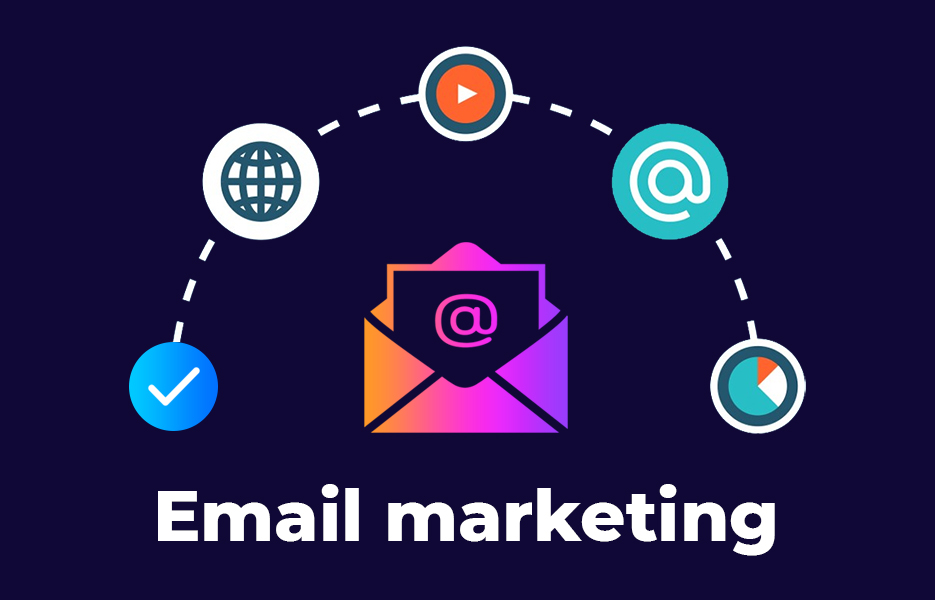
What is email marketing?
Email marketing is exactly how it sounds – using email for marketing, to promote your business, your products and your services. That’s just the start of what email marketing offers businesses though. Email marketing can help you grow the relationship with your customers, to develop new relationships with others, and to keep customers informed of developments that may need to know about.
Email marketing has the potential to be incredibly valuable to all businesses, but even more so for DropShipping businesses and other businesses that operate mostly online – we’ll find out more as we move through the post.
Hasn’t email marketing been replaced by social media marketing?
Since so many businesses put so much emphasis on their social media marketing, we’ll forgive you for assuming that people have fallen out of love with email marketing. There has been quite a number of posts predicting that email marketing will fall by the wayside before long – yet it is still here, and in 2019, it delivered the best return on investment of any marketing channel. Over 59% of marketers say that email provides their best ROI, and on top of that, 78% of marketers have seen an increase in engagement via email over the last 12 months. There’s no way that email marketing is dead just yet, and with the increasing numbers of people signing up for email accounts, we doubt there will be any real decline in email marketing for years to come.
In real terms, email marketing is one of the most efficient, cost effective methods of marketing for your business – and will create more conversions per customer than any other. So while you’re thinking about your marketing strategy and deciding which ways you’re going to interact with your customers, don’t forget to establish your email marketing strategy. Build your social media strategy, by all means – but be sure to consider the wider benefits that email could have for your business.
How much ROI can you get from email marketing?
This is the biggest reason that we think that email marketing won’t be going away any time soon. For every $1 that is spent on email marketing, there’s an average return of $42 – that is an absolutely massive return on investment. And that’s not all. The lifetime value of an email address continues to grow by around 33% each year – so the longer you can maintain successful email contact with your customers, the more valuable the customer is likely to become to you.
Which are the best types of emails to send?
There are a few types of emails that are likely to provide value for your business – welcome emails and abandoned cart emails are the two that generally show the best returns.
Welcome emails have been found to have an average open rate of 82%. That’s a massive percentage – so it is well worth sending emails to those customers who have just signed up with your store. Want to get an even bigger result on your return on sending welcome emails? Try adding a discount code or a free gift with next purchase to your welcome email to provide an incentive for them to come back to you.
Another valuable addition to your email marketing arsenal is abandoned cart emails. There are so many reasons that customers abandon their carts – whether they were just window shopping, they spotted something else that took their fancy or they just put their phone down and forgot!
Research suggests that the optimal amount of time to send an email to remind a customer about their abandoned cart is around an hour. If the email is sent more than 24 hours after the cart is abandoned, customers are much less likely to return and complete their purchase. Not only that – if you follow up three times with abandoned cart emails, you’re likely to see a 69% increase in your orders. That’s a great percentage, so it’s definitely worth investing in abandoned cart emails.
Don’t stop there though! Other types of content that are known to be effective for email marketing include tutorials, customer or brand stories, time-sensitive promotions, receipts (yes, receipt and tracking emails offer a marketing opportunity!), post-purchase review requests… These aren’t the only types of emails you can take advantage of either, so be sure to look at each type of email as an opportunity to connect with your customers effectively and increase their opinion about your business.
How often should you send promotional emails?
Clearly, there’s fine line between receiving promotional emails that you’re interested in reading and you starting to feel like the emails you’re receiving are starting to come through too often, or that they are spammy in nature. If you feel like that about other brand emails, it is relatively safe to assume that your customers feel the same way, and may do so about your emails too. So how do you stay on the right side of the line? Exactly how often do customers want to receive promotional emails from their favourite brands? Well, 49% of consumers said they were happy to receive promotional emails on a weekly basis. Although customers might be happy with emails weekly, 35% of marketers send between three and five emails per week – so we recommend checking in with customers on your list every once in a while to be sure that they’re receiving the amount they’re happy with. A quick poll using a tool like SurveyMonkey might be all you need, but you might engage with your social media followers too – there are built-in tools on Facebook and Twitter that you could use for this purpose.
Where do customers read your emails?
91% of consumers say they check their email at least once a day from their smartphone, and around 49% of all emails are opened on mobile devices. That means you’ll need to bear the design of your email in mind when you’re setting up your campaigns. Over 42% of people who receive an email that isn’t optimised for mobile simply delete it, and only 32% of people will read it on their desktop later.
Although interactive emails have also been proven to improve click rates by around 300%, which is a HUGE increase –but you’ll need to be sure that any interactive emails you send are suitable for viewing on mobile devices.
How much is an email address really worth to your business?
When you’re collecting email addresses and building your mailing list, you might wonder how much each email address really is worth to your business. On average, each email address is worth around £84.50 to a business – although this is the average figure. There will be some businesses for which that number is much lower, and for others, it will be much, much higher.
What days are best to send marketing emails?
The first ten days of the month generally show the best overall performance for email campaigns – perhaps in part, because many people get paid just before that, at the end of the previous month. But here’s the interesting thing. The best single day overall to send a marketing email is the 29th of the month (although clearly not for February, most years!) but we’re not entirely sure why this is – perhaps again, it’s to do with the proximity to pay day. Whatever the reason, it’s useful information that businesses need to know, and take advantage of.
In terms of which day of the week is best to send marketing emails, there are three days that have been shown to get good open and click-through rates – Tuesday is suggested to be the best day, followed by Thursday and then Wednesday. It might seem pretty logical as to why, with Mondays being by far the busiest day of the week having less available time for marketing emails, and Fridays people are generally starting to get into weekend mode.
What time is the best to send email?
Although people are likely to see all the emails in their inbox, the nearer to the top of their inbox that you can get your email when they open it, the more chance that the recipient will actually read it. There’s a number of times through out the day that might work for your customers:
6am – as many people wake up and start their day, they often check their email and social media while they’re still in bed. Scheduling your emails for first thing in the morning means it is likely to be seen as your customers are just getting going.
10am – most office workers have got their urgent tasks out of the way by this time, and they’re settling into their regular jobs. Tea break at 10.30? Time to check their email, and a great time for your email to be seen.
2pm – back from lunch, time to check email again! Don’t forget, there’s plenty of people who have a tea break mid-afternoon when they might check their emails too.
8pm – final email checks before bed? Of course, many of us do those – both on our personal email and business email accounts.
Just like our advice on our post about the best time to post on social media though, this isn’t something that applies to every single business. You should test different times to send your marketing emails, to see what works best for you and for your customers.
Should you personalise a marketing email campaign?
Yes, definitely! The statistics say so – but here’s why. Personalised emails stand out in a customer’s inbox – it is more likely to be seen as relevant to them, and so it is also more likely to be opened, and clicked on. Although customers know it is done automatically, it creates a much better customer experience – and so, it is more likely to increase conversion rates. Here are the stats to prove it:
- 74% of marketers say targeted personalisation increases customer engagement.
- Emails with personalised subject lines are 26% more likely to be opened.
- Personalized emails deliver 6 times higher transaction rates.
- The share of U.S. consumers who find marketing content personalization “very” or “somewhat” appealing is 90%.
If adding every customer’s name to an email campaign is too difficult (or you’re not quite there yet) you might consider personalising the subject of the email with a topic of interest, the industry you’re sending to, or the company that you’re contacting (if you’re sending to more than one person at the company). It might not be quite as effective as personalising emails with names, it will be better than using a generic title, and customers are likely to be more engaged.
Should you send customers an email to wish them a happy birthday?
Yes! We’ve already discovered that personalisation increases customer engagement. Birthday emails tend to generate 342% higher revenue per email than standard promotional emails, and over 57% of consumers expect you to use information about their birthday on emails to them. That’s a HUGE number, and if you’re collecting that data anyway – it’s likely to be well worth including a discount code or free gift if they make a purchase!
Can you use other information to personalise emails to customers?
Absolutely – many consumers expect you to use information about them on emails too. Around 75% of customers think businesses should use information about the purchases they have already made, and 55.5% expect you to use information about what they have browsed on your website. Interestingly, some 54.9% of customers expect you to use their gender information too – but be cautious if a customer doesn’t provide their gender information.
Email marketing for DropShipping businesses
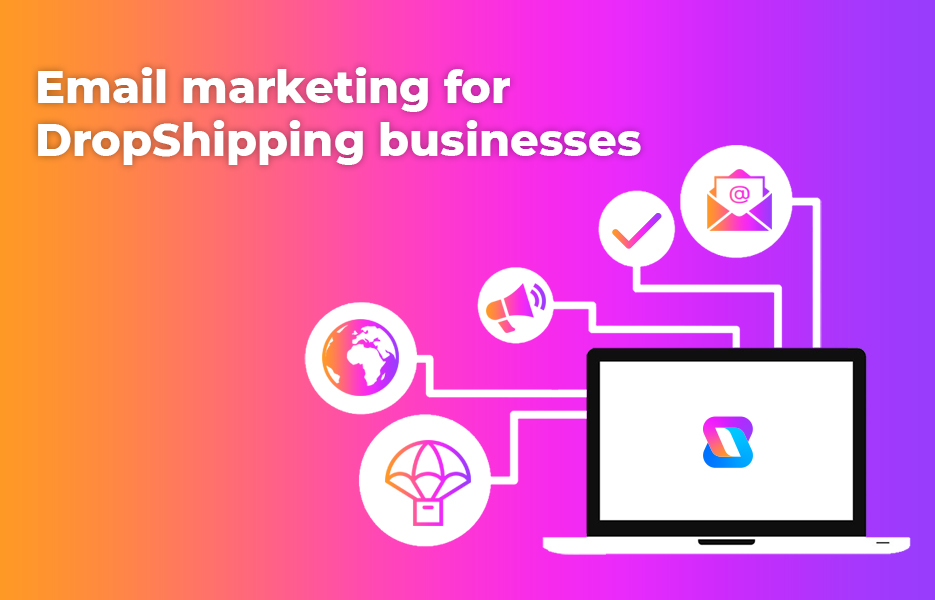
How do you get started with email marketing?
When you’re starting to design your email campaigns, think about the emails you receive from your favourite brands. While you’re thinking about why you subscribe to different marketing emails, you’ll probably find you like them for similar reasons. Maybe they offer products that you’re particularly interested in, or there are interesting stories or other content that you find particularly valuable, like videos (video is shown to increase click-through rates by up to 80%!) or tips. From there, you’ll be able to establish your goals, and then you’ll need to look at how you are going to manage your email marketing campaigns.
What is the best way to manage email marketing campaigns?
Sending loads of emails from a Google or Outlook account isn’t going to end well for you – there’s a high chance of your email account being suspended if you try and send marketing campaigns from there, so you’ll need to look for a tool to help you. As you’re probably aware, at Avasam we love automation. It helps you manage your DropShipping business more efficiently (sign up for your free account to find out more!) and email marketing can definitely benefit from automation too! Here are five free email marketing tools that can get you started:
Sender – their free plan allows for up to 2500 subscribers, and send up to 15,000 emails each month. Once you scale up, plans start at around $10 per month.
Mailchimp – one of the market leaders in email marketing. The free plan allows for 2000 subscribers and 10,000 emails per month.
Mailjet – allows you unlimited numbers of contacts, and up to 6,000 emails per month, with paid plans starting at less than $10 per month.
Zoho Campaigns – allows for up to 2000 subscribers and 12,000 emails on the free plan, and paid plans start at just $3.
SendPulse – gives you up to 2,500 contacts and 15,000 emails per month, with paid plans starting at just $7.88.
These aren’t the only email marketing tools you can make use of – there are many other free options and plenty more that are paid-for options. As we always say – do your research and get the tool that provides you with the functionality that you need.
Great email marketing tools will help you create engaging emails:
- Look for drag and drop functionality, so that you’re not having to learn intricate design tools.
- Be sure that you can send bulk emails, with the ability to personalise and target your emails to the customers you want to receive them.
- Make sure that your chosen email marketing tool allows you to manage your contacts, segment email addresses into groups (segmented campaigns can see an increase in revenue of up to 760%!)
- Can your tool help you to track the performance of your campaigns?
- Ensure that your email marketing tool helps your emails to be seen and not end up in the spam folders of your recipients.
How much does email marketing cost?
It depends – there are some businesses that are working with agencies that end up costing thousands of pounds every month. If you’re a small business and you’re managing your own campaigns, using a free, or basic tool, your costs could be as low as just a few pounds and a bit of your time to create the content.
Do marketing emails really increase purchases though?
They really do. Almost 60% of consumers say that marketing email influence their purchase decisions, and over 50% of consumers say they buy products or services from marketing emails at least once a month. That’s a huge increase – definitely not one we’d want you to miss out on.
How can you measure the success of email marketing?
When you think about emails being sent, you might not have thought about how to measure the success rate of your email campaigns. There are several methods of measuring the success of emails being sent.
The delivery rate for your email campaign is a good way to measure how well your mailing list is performing. If you find your delivery rate is low, it means you might want to look at the health of your list. Around 16% of all emails never make it to the inbox – but you’ll want to get this figure as low as possible.
The open rate for your email campaign measures how many people actually open the email – how long they spend reading it is difficult to measure, but there is evidence that you can increase your open rate by personalising your emails, and some research suggests that emails with subject lines with more than 25 characters are more likely to be read than those with less than 25 characters. The average open rate for an email marketing campaign is 22.86%.
If your email is relevant, and the reader is interested, then the next metric to measure is the click through rate. The average click through rate is 3.71% – but you can increase your click through rate by using segmentation to target your campaigns better. It might mean that you end up needing to send separate email campaigns overall, but it is likely to increase the return on your investment, and lower your unsubscribe rate. The average unsubscribe rate for an email is just 0.21% – that’s pretty low, but if you’re seeing much higher numbers then it’s time to examine what triggered customers to unsubscribe. Was it something that was in the content of your email? Perhaps you’re sending too many emails, and your customers have had enough? Either way, be sure to review your unsubscribe rate regularly so that you’re not wasting time.
Another useful statistic is that over 16% of emails are deleted without being read. Many email users that have unlimited email storage will leave email unopened, and then delete in one go. If you find your emails are being deleted without being read, review your email headers, experiment with personalisation and use of emojis.
You’ll need to pay close attention to these metrics. If you end up getting poor results using these metrics, it is likely that you’ll end up losing money on each email campaign. Be sure to be careful with your email marketing strategy, from what you include in the content of each email, to how often you’re sending them.
Don’t use a noreply email address to send your marketing campaigns
You want your customers to engage with you on your social media, don’t you? So why wouldn’t you want them to engage with you on email? Yes, we get it – that’s one more inbox to check, but you’ve done the hard work to get them as a customer, so don’t ignore your customers who actually want to respond to your emails. Those customers who have signed up to receive your emails are customers who are more likely to click through and make a purchase, and they’re likely to be your biggest fans. If they engage with you on email, there’s a chance they could be a great brand ambassador for you – so don’t neglect them.
How can you expand your email list?
Good question – your customers won’t just sign up for no reason, and your email marketing database is shown to degrade by just over 22% each year. Customers change jobs, use different email addresses as they change their name or company… There’s loads of reasons that you’ll need to stay on top of your email list.
To keep people subscribed to your email list, you’ll need to have fantastic content in your emails. On the Avasam blog, we do our best to create useful, relevant content for you as you’re growing your business – and we aim for the same for subscribers to our email too. (if you’d like to sign up for our emails, you can do so here!)
Once you’re producing great content for your emails, you’ll need to encourage your subscribers to share your emails – including social sharing buttons is one way to do this, and ‘send this to a friend’ buttons are another. Don’t forget to include a link to subscribe, in case potential followers forward your email.
To help encourage new customers to sign up to your email list, you might create some unique content – like an eBook or a white paper, and host it on a landing page that requires an email address to download it. Don’t forget though, you’ll need to make it easy for people to unsubscribe. You might also consider providing bonus content on your emails, so that when customers have signed up, they see value in staying subscribed to your list.
We’ve talked about cross-promoting your social media on different channels on the blog before. Your email list is no different! You can talk about something exciting that you’re offering on your email this week on one of your Stories, which will encourage your social media followers to sign up with you. If you’re working with an influencer or doing takeovers, then include mentions of your emails as part of that.
On your website, be sure to invite visitors to sign up where it is logical to. Don’t go over the top though, and keep your forms short – people don’t want to give away all their information up-front. If you’re creating great blog content to increase your ranking on Google, give readers the chance to subscribe – you can then use their email address to send your newsletters.
Don’t forget about collecting email addresses offline too – if you’re out and about at trade events, or you’ve got a physical retail location (either permanent or temporary, like at a summer fete or Christmas market) then invite people to sign up for updates with you when you take orders.
What about the GDPR?
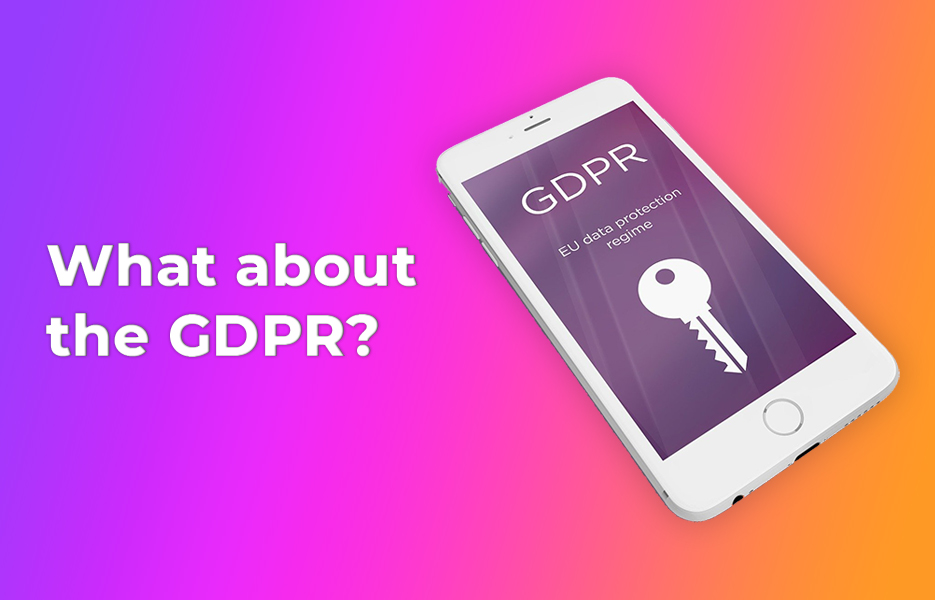
We absolutely understand your concern – those regulations were a huge concern for all businesses when they were implemented in 2018. With fines for non-compliance as high as €20 million or 4% of your global turnover (businesses are fined whichever is higher!), GDPR regulations have the ability to stop a business in it’s tracks. The most common complaints made under the terms of the GDPR have been for telemarketing, promotional emails and video surveillance/CCTV, so you’ll need to be aware of what you can and can’t do, and play by the rules.
GDPR applies to all personal data, and personal data also includes email addresses. That means you need to be incredibly cautious with how you use your email list, but it doesn’t mean you need to abandon email marketing altogether. You just need to be sure that you’re only sending emails to people who actually want your emails.
To keep it brief:
- Be sure to only send emails to customers that have explicitly opted-in to receive them
- Use re-permission campaigns to be sure that you have consent from existing subscribers
- Avoid using automated decision-making processes to work with subscriber’s data
- Always have a way that subscribers can easily opt-out of marketing campaigns
- Offer subscribers the option to easily manage the type of content they receive from you
If you have email addresses on your list that pre-date the GDPR, you’ll need to get permission from them to use their email address now, or you’ll need to delete them. There’s no exceptions, and if you use email addresses from before the regulations, you might end up with a complaint on your hands.
You might assume that people will decide to opt out of receiving your email, but when the Royal National Lifeboat Institution (the RNLI) found that their re-permission campaign led to well over half of subscribers to rejoin their mailing list, as well as tripling their average donation! As a DropShipping business, you might expect customer rejoins to your mailing list to be considerably lower, but it might not be as bad as you think.
For new customers that you want to sign up to your email campaigns, you need to make it clear that you’re asking them if they want to sign up for your marketing emails. You don’t have to worry if you need to contact them about their order – that’s an expected business need.
For marketing emails, it’s a bit different. Telling customers that they may receive marketing emails from you and that they can opt out at any time isn’t compliant for the GDPR. A double opt-in isn’t necessary – they just need to sign up, and you’ll need to make sure you have a date stamp of when they signed up and ticked the box to say they wanted to receive marketing emails from you.
You will need to abide by the rules around the ‘right to be forgotten’, which means that if someone contacts you and asks you to erase their data, you must do so within a month. More simple are the rules about unsubscribing – but you are legally required to include an unsubscribe link in your emails, so be sure to include this in every email.
There is much, much more information about the GDPR available online, but these are some of the basics – it is your responsibility to understand and work within the rules and regulations.
Tips for effective email use
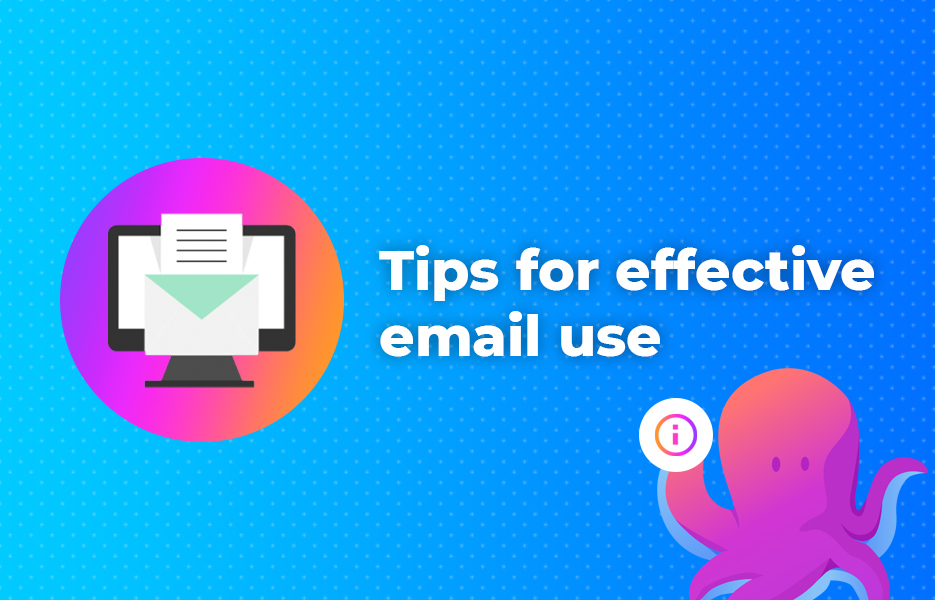
While we’re thinking about emails and how customers might use their emails, it’s worth thinking about your own use of email. When you’re building a business, you’re likely to be receiving notifications on your phone from your emails, from Facebook, Twitter, Instagram… wherever you’re inviting your customers to engage with you. You don’t want to get burnt out (or repetitive strain injury!) from answering all those messages in separate apps on your phone.
In our post about using Facebook Messenger in your DropShipping business, we talked about using a social media management tool that allows you to manage all your inboxes in one place – it’s a wise move, and we recommend finding one that can help you manage your emails alongside your social media messages.
How can you use your email more efficiently?
Many of us that have jobs that mean we have to keep an eye on our email, and that’s even more important to do if you’re the business owner. But every time you check your email while you’re working on something else, you’re losing time on your primary task, because your concentration can take between 64 seconds and 23 minutes to recover! Desktop, or smartphone notifications interrupt your flow of thought too. The Harvard Business Review estimates that we’re all checking our emails six times more than we need to, losing 21 minutes every day. Even just deleting an email can take 3.2 seconds, which can add up to more than three minutes a day!
To use your email most effectively, the Harvard Business Review recommend:
- Turning off notifications and checking your inbox hourly
- Moving each email out of your inbox as soon as you have read it
- Using search functionality to find emails
- Having only two folders, and using shortcuts to archive your emails there
- Not bothering with irrelevant or less important emails individually
- Unsubscribing or blocking unwanted emails, so you don’t have to delete them
It might feel difficult to break out of your usual habits, but by changing the way you check your emails you can increase your productivity significantly – think about all the ways you can use that extra time each day!
If you’re new to email marketing there might be a lot to learn, but there’s so much potential business to be gained from it. Just as when you were starting your DropShipping business, it’s a wise move to do your research and get your automation in place before you get started. Using automation for your email marketing is one of the best ways to ensure that your email marketing campaigns are successful and that you’re less likely to receive a complaint under the terms of the GDPR. Once your automation is in place, you can refer to your target customer research and start designing your email marketing strategy, which will help you grow your business even further.

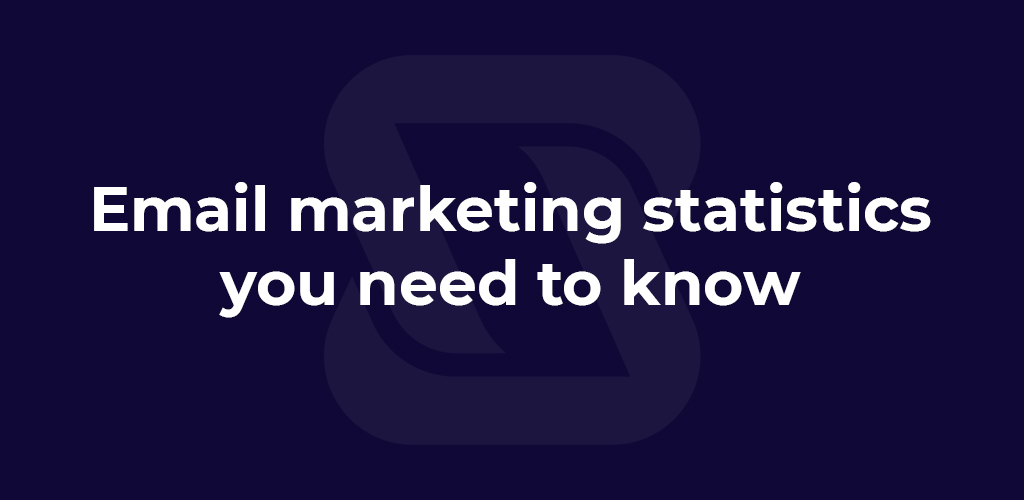
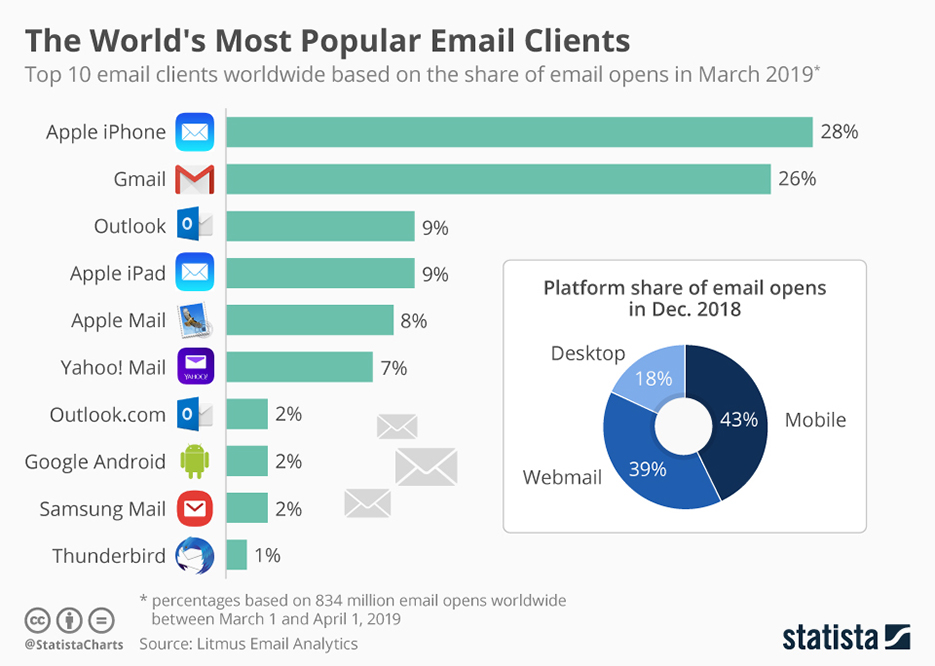


DropShip products from verified suppliers to diversify your inventory and scale your eCommerce business